Age of Jackson
Age of Jackson
The period from 1820 to 1860 was a time of great change in the United States. The country was rapidly growing, and the people were changing.
As more people settled on land and became prosperous, there was a growth in the middle class—people who weren’t rich, but also weren’t poor. They were also called the common man.
As more people settled on land and became prosperous, there was a growth in the middle class—people who weren’t rich, but also weren’t poor. They were also called the common man.
These people were proud that they had managed to improve their lives. One man, a Tennessean, was also proud of his common roots.
Andrew Jackson became a hero to the common man, and he was elected president. Historians consider him one of the most influential presidents. Because of his importance, this time period in U.S. history is sometimes called “the Age of Jackson.”
Andrew Jackson became a hero to the common man, and he was elected president. Historians consider him one of the most influential presidents. Because of his importance, this time period in U.S. history is sometimes called “the Age of Jackson.”
In 1828, the U.S. had 24 states. By 1860, the nation grew to 33 states. In some part because of Tennessean James Polk's tenure as president, the United States’ territory extended to the Pacific Ocean.
More Americans began to vote and participate in politics. In 1828, 1.1 million Americans voted for president. In the 1860 presidential election, 4.7 million voters cast ballots.
More Americans began to vote and participate in politics. In 1828, 1.1 million Americans voted for president. In the 1860 presidential election, 4.7 million voters cast ballots.
Americans made many technological advances. Railroads and steamboats reduced the amount of time it took for people and goods to travel from place to place. What had been a ten-day trip by horse in 1828 became a one or two-day trip in 1860 by train.
In 1837, Samuel Morse invented the telegraph. It allowed news to be transmitted very quickly using electrical signals and special codes. Before telegraphs, Americans would often have to wait weeks to receive important news by mail. Afterwards, they could receive them in a day.
During these years Tennessee also changed dramatically. Rough frontier areas became busy towns like Columbia, Clarksville, and Murfreesboro. Nashville and Memphis grew into cities. Prosperous small farms and a few larger plantations spread throughout the countryside.
The number of people who lived in Tennessee increased rapidly. From 1820 to 1860, the population expanded from about 400,000 to more than one million people. About one out of every four people living in Tennessee during this time were enslaved African Americans.
Many people did not share equally in this time of growth. Slavery was a part of everyday life in Tennessee. Slaves, Indians, and women had few legal or political rights. Many Americans, especially in the South, thought tribes like the Cherokee should be forced off their lands and moved west of the Mississippi River. This eventually led to the Indian Removal by the federal government.
Acknowledgements
Acknowledgements
Teacher's Page
Picture Credits:
- Colored print of Andrew Jackson. This print was published sometime between 1832 and 1837 by the firm N. Currier. Tennessee State Museum collection, 82.116.2.
- Drawing entitled, “Court House at Nashville.” It shows how the court house looked in 1832 along with the Nashville Inn and City Hotel. Tennessee State Library and Archives.
- Drawing entitled, “Chattanooga in 1858.” This print originally appeared in the August 1858 issue of Harper’s Monthly. It shows a railroad station and a flour mill along with other warehouses and stores. Chattanooga-Hamilton County Bicentennial Library
- Portrait of Sequoyah. Present day artist Carlyle Urello created this painting in 1988. Sequoyah, or George Gist as he was first known, developed the Cherokee syllabary, a type of alphabet, which enabled the Cherokee to communicate in written form for the first time. Tennessee State Museum Collection, 88.15.
- Colored print of James K. Polk. This print was published sometime between 1845 and 1850 by the firm N. Currier. The U.S. Capitol is shown in the background. Tennessee State Museum Collection, 78.19.51B.
- Drawing entitled, “View of Memphis, Tennessee.” The print shows ferryboats traveling to and from Memphis. Several people are also shown in the foreground standing on shore. Tennessee State Library and Archives.
- Colored print of Andrew Jackson’s home, the Hermitage. This print was made by Francis W. Strickland in 1856. It shows a road and line of trees that lead to the mansion and a picket fence that surrounds the grounds. Two men are shown riding horses, while a white couple are shown talking to slaves. Library of Congress.
- Drawing of the Tennessee State Capitol. This print was made in 1855. It shows several people walking along paths leading to the capitol building. Tennessee State Library and Archives
Acknowledgments:
Any views, findings, conclusions, or recommendations expressed in this web site do not necessarily reflect those of the National Endowment for the Humanities.
Age of Jackson >>
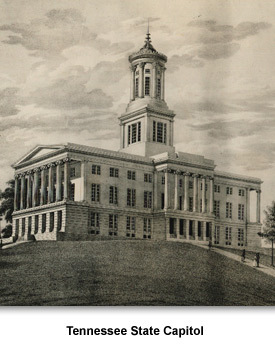
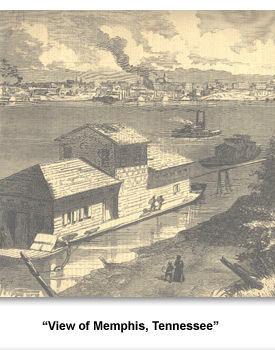
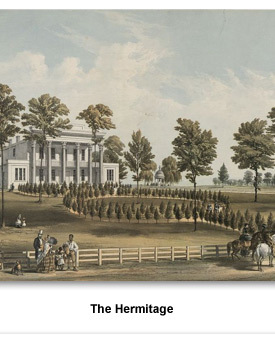
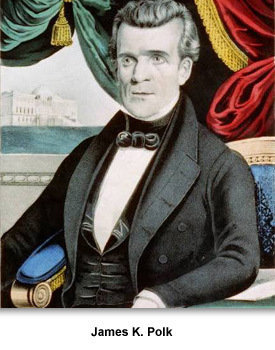
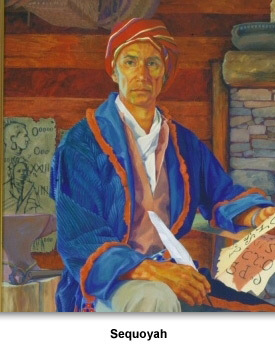
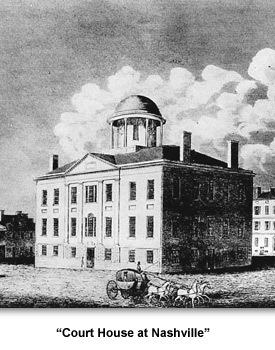
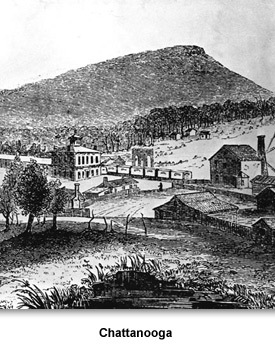
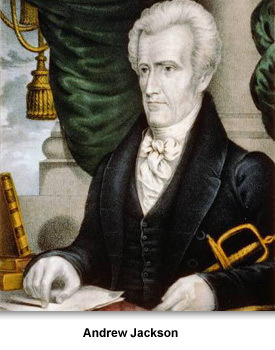
 Sponsored by: National Endowment for the Humanities
Sponsored by: National Endowment for the Humanities